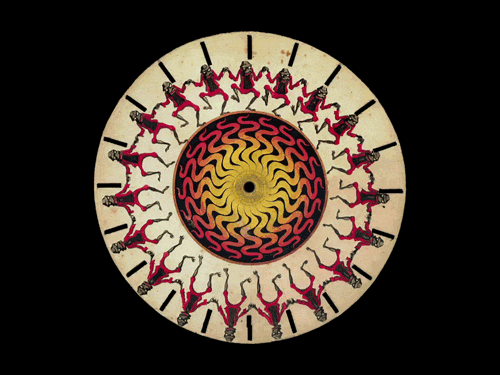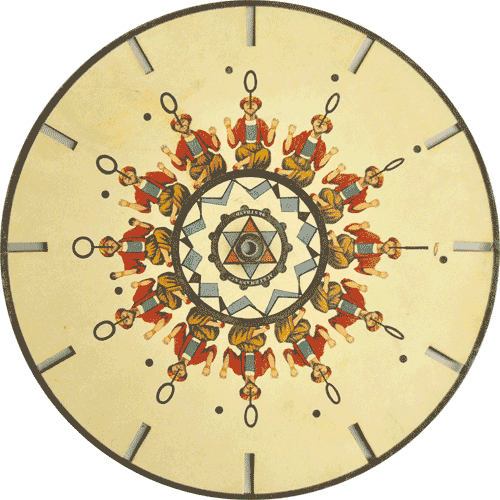Forty years before the advent of motion pictures, and eighty years before the development of modern animation, creative minds were already attempting to make a series of static images magically move for an audience. One of these earliest pioneers was Belgian inventor Joseph Plateau, who created the Phenakistoscope in 1831. His device used images on a spinning wheel that, when looked at through a slit onto a mirror, created the optical illusion of movement. The phenakistoscope was considered a novelty or a child's toy at the time, since only one viewer at a time could look through it, but the basic formula for motion pictures was officially in place. in 1871, Eadweard Muybridge would use a series of successive photos to make the first movie, "The Horse in Motion," and in 1914, Windsor McCay would become one of animations most prominent pioneers with "Gertie the Dinosaur." The work of Plateau helped pave the way.
Richard Balzer has been compiling and digitizing many of these early phenakistoscopes into GIFs, as well as other early animation devices like zoetropes, fantascopes, and thaumascopes. Without his effort, this art form would likely have passed into the ether. please go to his website HERE and his Tumblr HERE to see more and to gather more information.


























So cool! These would make great projections in live music.
ReplyDeletehey michael, it's funny you say that cuz i only found out about these when Daniel Lanois projected them during a live performance a couple weeks ago. he took a minute beforehand to explain what these were and what their significance was. i immediately searched for em when i got home!
DeleteAwesome. Thanks for compiling these. I'd seen a bunch of them, but not so many in one place.
ReplyDeleteThese are amazing! I love how the "proto-frogger" even shows the frog's shadow. I want to make one of these now...
ReplyDelete